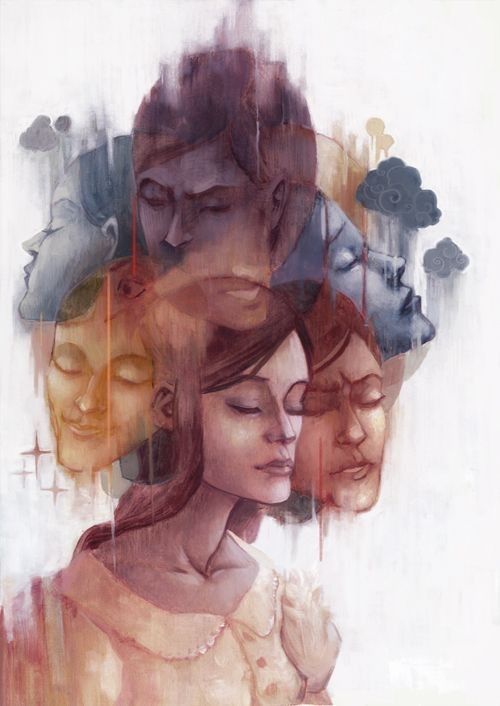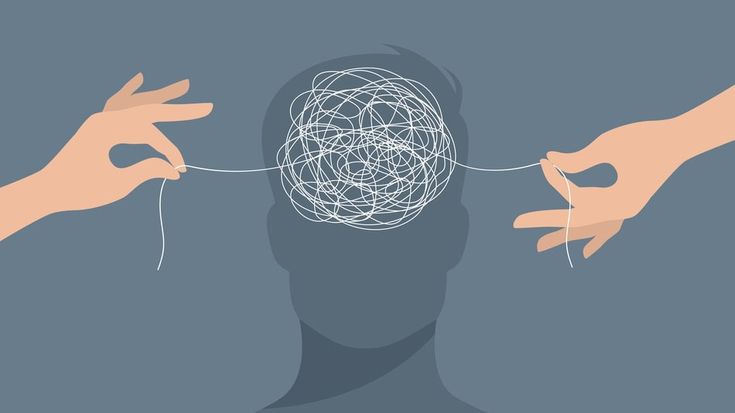The theory of personality proposed by Hans J. Eysenck (1916-1997) is one of the most influential in trait psychology, standing out for its factorialist, hierarchical approach, and fundamentally, for postulating solid biological bases for its dimensions. Eysenck defined personality as “a more or less stable and enduring organization of a person’s character, temperament, intellect, and physique, which determines their unique adjustment to the environment.”
The core of his model, known as the PEN Model, is composed of three main dimensions, or “supertypes,” which are continuously distributed across the population:
The Three Fundamental Dimensions (The PEN Model)
Extraversion-Introversion (E):
- Extraverts (High E): Characterized by being sociable, active, impulsive, uninhibited, optimistic, and sensation-seeking. They tend to look for external stimulation.
- Introverts (Low E): Tend to be calmer, reserved, reflective, planners, passive, and controlled. They prefer internal experiences.
- Biological Basis: Eysenck associated it with the levels of cortical arousal regulated by the Ascending Reticular Activating System (ARAS). He postulated that extraverts have a chronically lower level of cortical arousal, which leads them to actively seek external stimuli to reach an optimal level of activation.
Neuroticism-Emotional Stability (N):
- High Neuroticism (Emotional Instability): These individuals show a tendency to experience negative emotions such as anxiety, depression, sadness, guilt, and irrationality. They overreact to stress and find it difficult to return to a calm state.
- Low Neuroticism (Emotional Stability): They are even-tempered, calm, emotionally controlled, and less prone to instability.
- Biological Basis: It is linked to the reactivity of the Autonomic Nervous System (ANS), specifically the limbic system. High Neuroticism is thought to be due to a hypersensitive limbic system, which reacts more intensely and enduringly to perceived threats or stressors.
Psychoticism (P):
- High Psychoticism: Individuals with traits such as aggressiveness, hostility, coldness, egocentricity, impulsivity, lack of empathy, and a tendency toward antisocial or unconventional behaviors.
- Low Psychoticism (Self-Control): They tend to be altruistic, empathetic, responsible, socialized, and conventional.
- Biological Basis: Eysenck suggested a relationship with genetic and hormonal factors, such as androgens, although this dimension has been the most debated and least agreed upon in terms of its specific biological correlates.
Hierarchical Structure of Personality
Eysenck’s model is not only dimensional but also hierarchical. At the top are the supertypes (E, N, P), which are composed of lower levels:
- Level IV (Supertypes/Dimensions): Extraversion, Neuroticism, Psychoticism.
- Level III (Traits): Groupings of habitual responses (e.g., Sociability, Impulsivity, Anxiety, Rigidity).
- Level II (Habitual Responses): Acts, emotions, or cognitions that are repeated in similar situations.
- Level I (Specific Responses): Actions or reactions that occur only once and do not define personality.
Hans J. Eysenck’s theory is not just a descriptive model of traits (the PEN Model) but an ambitious psychobiological causal model that seeks to explain why people exhibit these personality differences, anchoring them firmly in physiology and genetics.

Deeper Biological Bases of the PEN Model
Eysenck was one of the first theorists to propose a direct and verifiable link between brain structure, the nervous system, and personality dimensions.
The Extraversion-Introversion Dimension (E) and the ARAS
The key difference between extraverts and introverts lies in the level of basal cortical arousal, regulated by the Ascending Reticular Activating System (ARAS) in the brainstem.
- Introverts: They have a chronically higher level of cortical arousal. This means their central nervous system is already highly active or alert. As a result, they avoid overstimulation (noise, crowds, intense social interaction) because they would quickly feel over-aroused or uncomfortable.
- Extraverts: They have a chronically lower level of cortical arousal (or, more precisely, a higher activation threshold). Their ARAS does not keep them sufficiently alert. Therefore, they actively seek external stimuli (sociability, risk, noisy activities) to raise their excitement to an optimal, enjoyable level.
The Neuroticism-Stability Dimension (N) and the Limbic System
This dimension is related to the Autonomic Nervous System (ANS) and the reactivity of the brain structures that control emotion, primarily the Limbic System (which includes the hippocampus, amygdala, and cingulate gyrus).
- High Neuroticism: This is due to a hypersensitive limbic system and ANS lability. These individuals have a low reaction threshold; they are easily emotionally activated by stress or perceived threats and, once activated, take much longer to return to a state of calm (stability). They experience intense autonomic reactions (sweating, tachycardia).
- Low N (Stability): They have a less reactive limbic system and a more stable ANS. They react less intensely to stress and recover quickly from emotional activation.
The Psychoticism Dimension (P) and Hormonal Correlates
Psychoticism is the most complex dimension. Eysenck suggested it was related to a vulnerability to psychotic and antisocial disorders. The proposed biological bases include:
- Androgens and Neurotransmitter Metabolism: Eysenck linked Psychoticism with high levels of androgens (like testosterone) and low levels of the enzyme Monoamine Oxidase (MAO). Alterations in these systems can affect the regulation of neurotransmitters like serotonin, dopamine, and norepinephrine, leading to impulsivity, aggression, and reduced cognitive inhibition.
The Importance of Conditioning in Socialization
Eysenck, influenced by the behaviorist tradition, integrated conditioning into his model to explain the socialization of personality differences:
The E-N-Conditioning Link: Eysenck postulated that personality predisposes one’s capacity for social learning. Socialization involves learning to inhibit antisocial behaviors through fear and anxiety conditioning (e.g., punishment or disapproval).
- Introverts (high cortical arousal) condition and learn by aversion better and faster than extraverts. Therefore, they are easier to socialize and are more likely to develop a strong “superego” or conscience.
- Extraverts (low cortical arousal) condition poorer. This, coupled with their sensation-seeking, makes them more prone to risk-taking or antisocial behaviors, as their learned inhibition is weaker.
The P-Criminality Link: High Psychoticism, being associated with low empathy and impulsivity, is consistently related to criminal behavior, especially when combined with high Extraversion and high Neuroticism.
Measurement Tools and Heritability
Eysenck developed robust psychometric instruments based on factor analysis to measure these dimensions, the best known being the Maudsley Personality Inventory (MPI), the Eysenck Personality Inventory (EPI), and the most recent, the Eysenck Personality Questionnaire (EPQ) (which includes the P scale).
Furthermore, his twin studies strongly supported the idea that the PEN dimensions have a significant hereditary component, estimating that personality differences are explained largely (around 50% or more) by genetics, with the rest attributable to environmental interaction.
Clinical Implications and Applications of the PEN Model
Eysenck’s model went beyond mere description and became a crucial predictive tool in various fields, with clinical psychology and criminality being the most prominent areas:
Psychopathology and Clinical Classification
Eysenck used his model to differentiate and classify certain neuroses and disorders:
- Dysthymia (Anxiety Neurosis, Obsessions, Phobias): Typically associated with high scores in Neuroticism (N) and low scores in Extraversion (E) (the melancholic quadrant). These individuals are prone to internal anxiety.
- Hysteria and Psychopathy (Conversion Disorders): Associated with high scores in Neuroticism (N) and high scores in Extraversion (E) (the choleric quadrant). Emotional activation is manifested in physical symptoms or external behaviors.
- Psychosis (Schizophrenia): Although Psychoticism (P) is the key factor, Eysenck suggested that schizophrenia was linked to the combination of high scores in P, high scores in N, and often low scores in E.
Criminal Psychology
Eysenck developed a theory of criminality based on the PEN model, arguing that offenders, on average, tend to score high in Psychoticism (P), high in Extraversion (E), and high in Neuroticism (N).
- P: Provides the lack of empathy, aggression, and hostility.
- E: Implies low cortical excitability and, therefore, a deficient conditioning capacity. This translates into ineffective socialization, as they fail to adequately internalize moral norms and inhibitions from punishment.

Controversies and the Evolution of the Psychoticism Dimension (P)
The Psychoticism dimension has been the most questioned and has generated the greatest controversies in Eysenck’s legacy:
- Excessive Breadth: Initially, the P factor was too broad, covering traits ranging from criminality and callousness to creativity and non-conformity. Some critics argued that it did not measure “psychosis” in the clinical sense, but rather a constellation of tough-mindedness and aggressiveness-impulsivity traits.
- Invariance and Methodological Critique: It has been debated whether the P scale of the Eysenck Personality Questionnaire (EPQ) adequately measured pure schizoid traits and whether it was invariant concerning variables such as sex and age.
- Evolution of the Concept: In response to critics, some researchers (following Eysenck) have proposed alternative scales, such as the S (Senselessness/Insensitivity) scale, which seeks to measure the aspects of schizoid personality or emotional coldness related to the P factor with greater specificity, suggesting a refinement of the original concept.








Leave a Reply